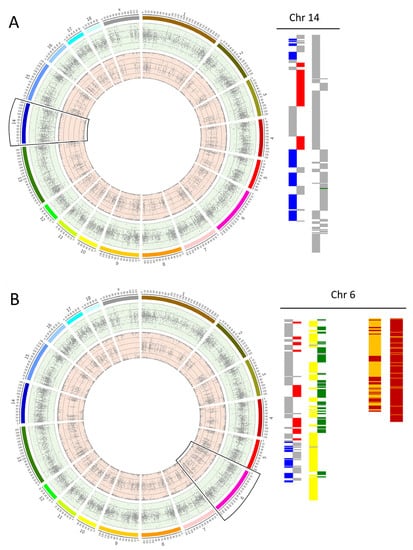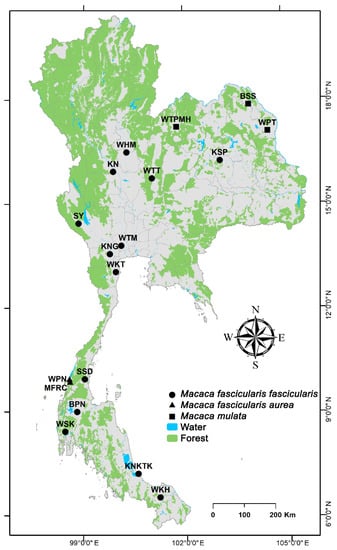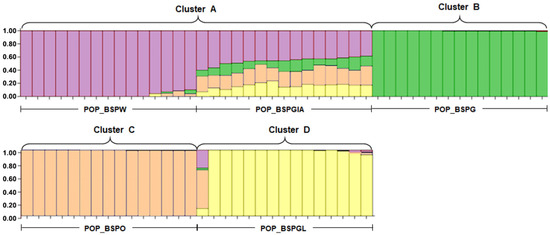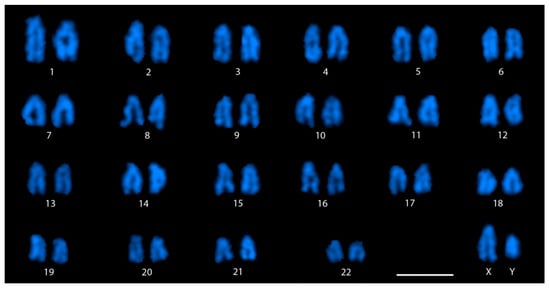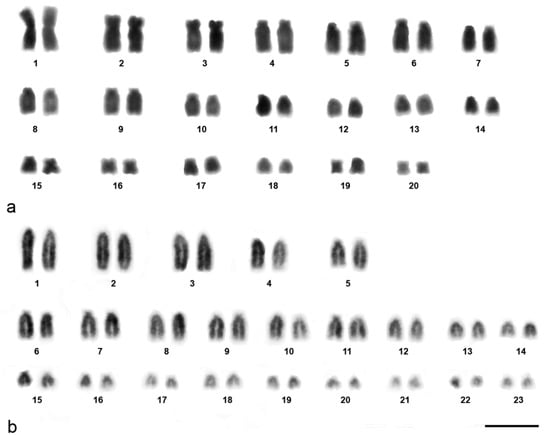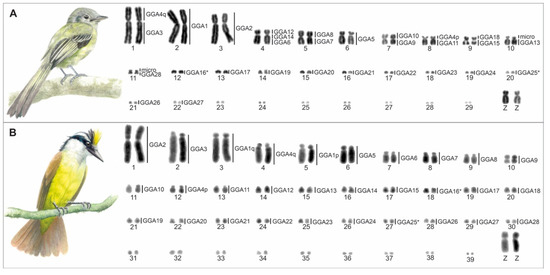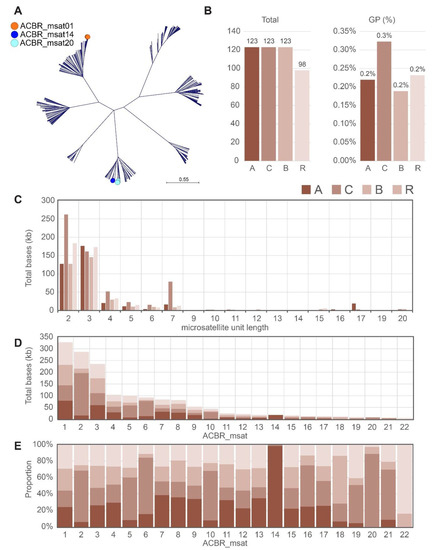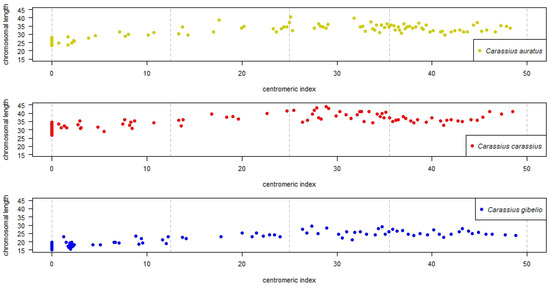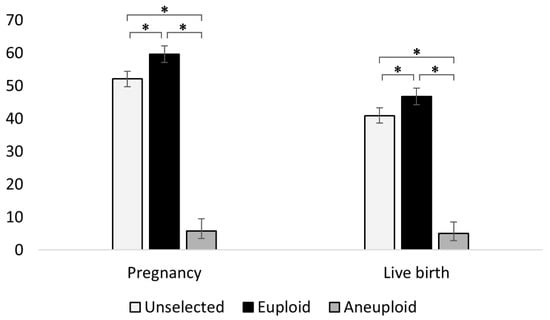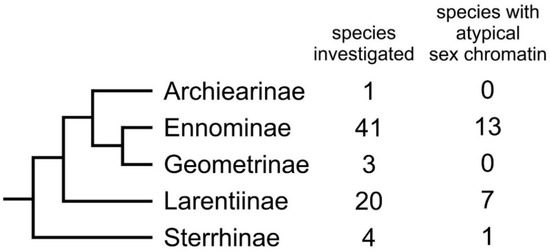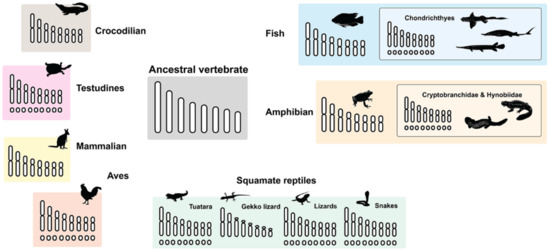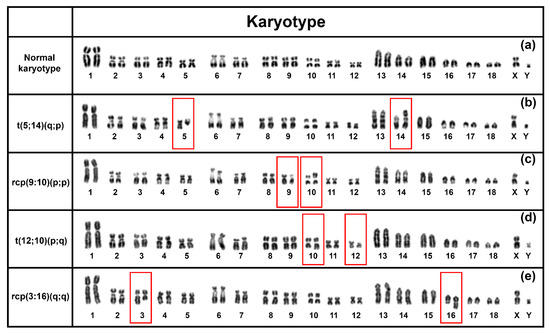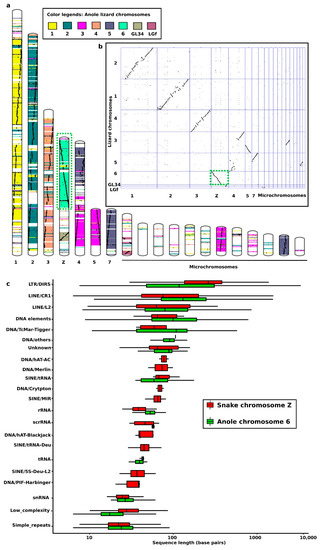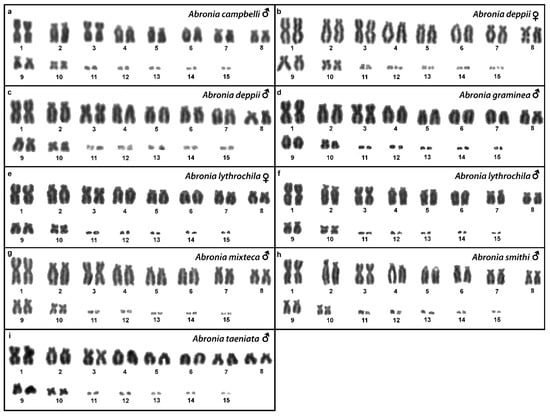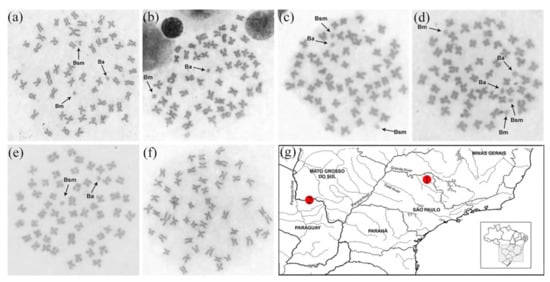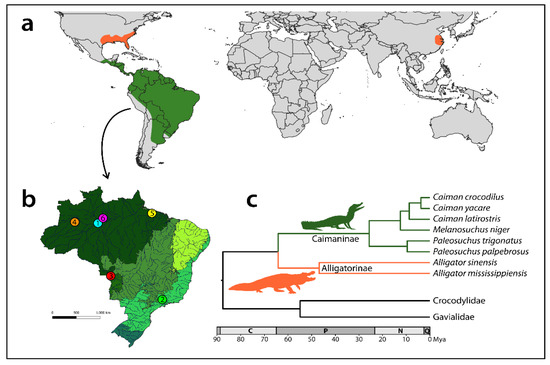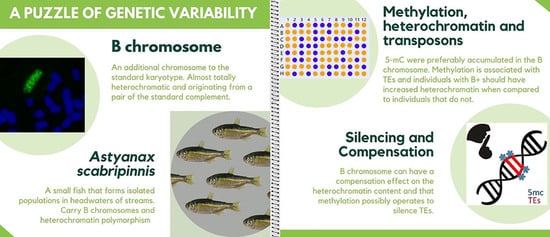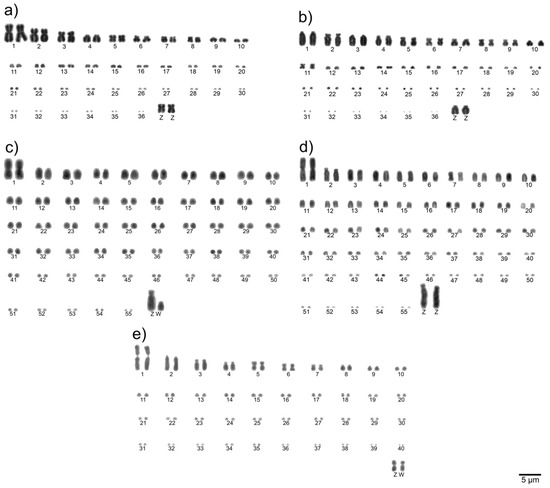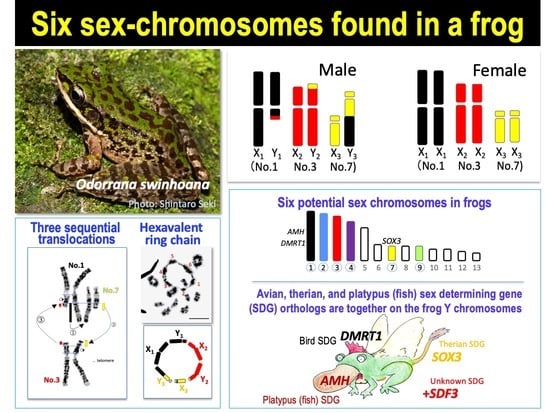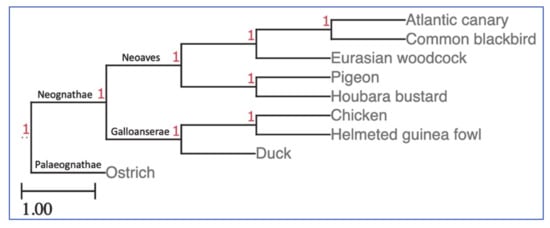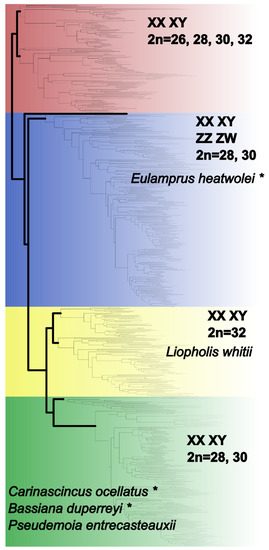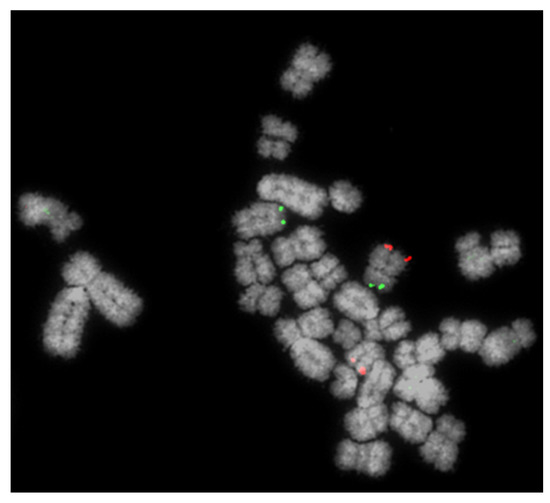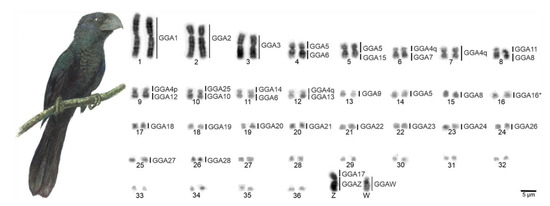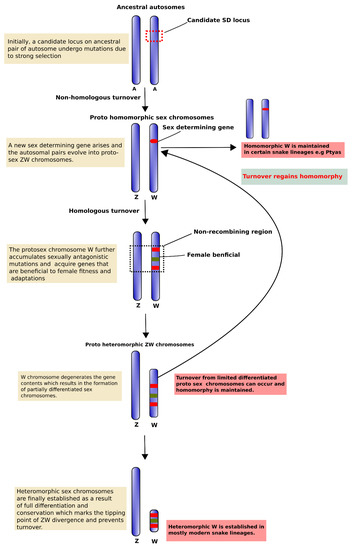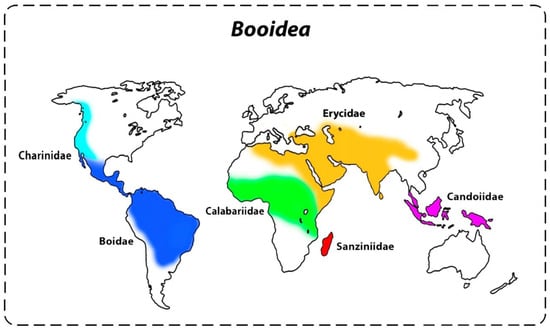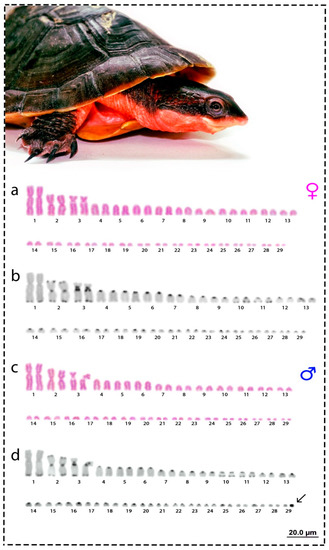Non-human Chromosome Analysis
A topical collection in Cells (ISSN 2073-4409). This collection belongs to the section "Intracellular and Plasma Membranes".
Viewed by 120545Editor
Interests: chromosomes; cytogenetics; aneuploidy; genome evolution; chromosome segregation; infertility; IVF
Special Issues, Collections and Topics in MDPI journals
Topical Collection Information
Dear Colleagues,
This Topical Collection of Cells is devoted to the International Colloquium on Animal Cytogenetics and Genomics (ICACG)
The study of non-human chromosomes has a range of broad and interesting applications. It is a broad and fascinating area, touching on fields such as disease, genome reconstruction, agriculture, sex determination, conservation, extinction, evolution, and epigenetics, amongst others. As a recompense for the unfortunate postponement of the International Colloquium on Animal Cytogenetics and Genomics (ICACG), the plenary speakers of the conference would like to present a series of exciting studies, either in the form of original research or review articles, providing novel insight.
When the conference reconvenes in 2021, the Topical Collection will be also available to participants to celebrate the end of our Covid lockdown.
Prof. Darren Griffin
Collection Editor
Manuscript Submission Information
Manuscripts should be submitted online at www.mdpi.com by registering and logging in to this website. Once you are registered, click here to go to the submission form. Manuscripts can be submitted until the deadline. All submissions that pass pre-check are peer-reviewed. Accepted papers will be published continuously in the journal (as soon as accepted) and will be listed together on the collection website. Research articles, review articles as well as short communications are invited. For planned papers, a title and short abstract (about 100 words) can be sent to the Editorial Office for announcement on this website.
Submitted manuscripts should not have been published previously, nor be under consideration for publication elsewhere (except conference proceedings papers). All manuscripts are thoroughly refereed through a single-blind peer-review process. A guide for authors and other relevant information for submission of manuscripts is available on the Instructions for Authors page. Cells is an international peer-reviewed open access semimonthly journal published by MDPI.
Please visit the Instructions for Authors page before submitting a manuscript. The Article Processing Charge (APC) for publication in this open access journal is 2700 CHF (Swiss Francs). Submitted papers should be well formatted and use good English. Authors may use MDPI's English editing service prior to publication or during author revisions.






